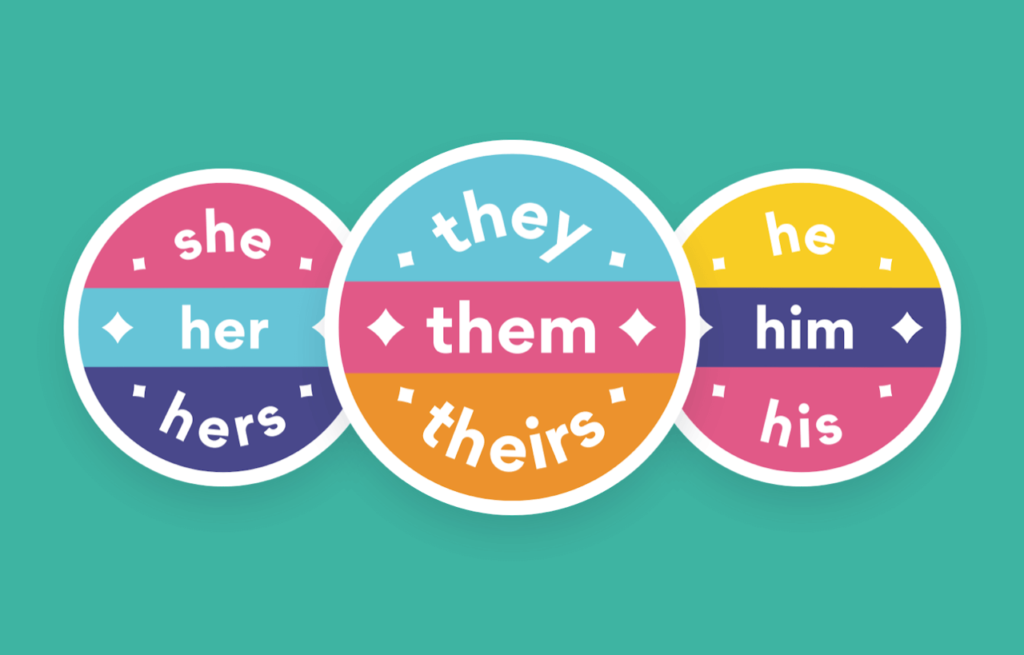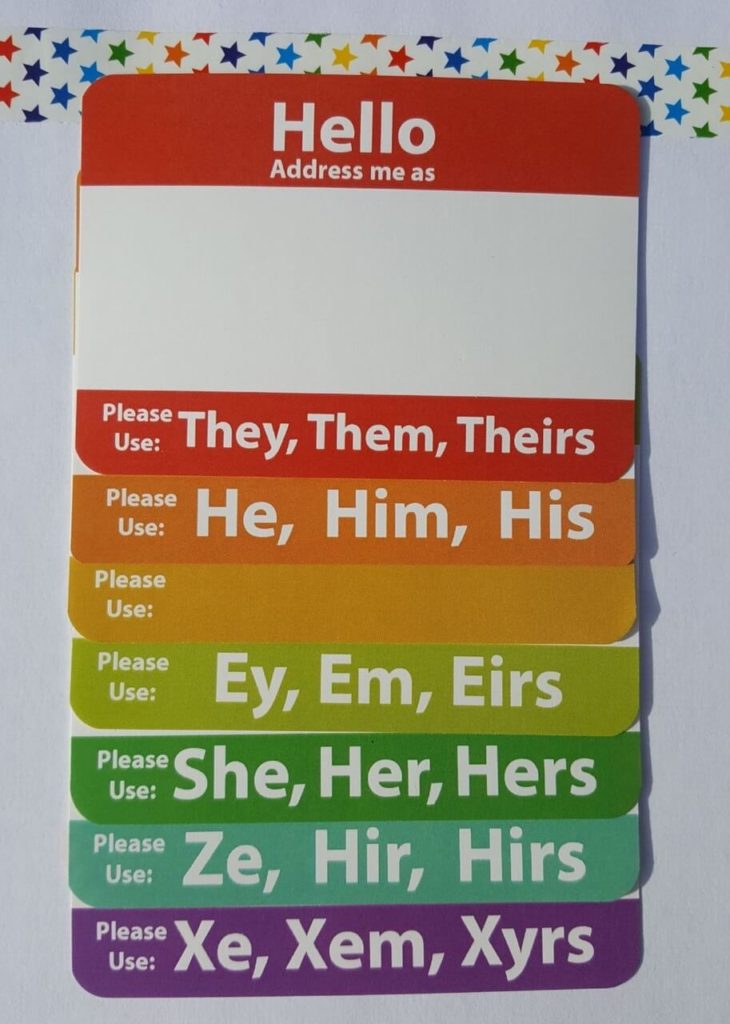For years, the debate has raged regarding the use of the singular “they” pronoun. With style guides like MLA, CMOS, and APA setting the standard and holding firm that “they” should only be used as a plural pronoun, it seemed unlikely those in favor of its singular use would ever prevail. But shifting perspectives finally gave way, and the tide has turned making the singular they pronoun now grammatically, and socially, acceptable. Wondering about the evolution and significance of this grammatical shift? Read on to learn more!
What is the Singular “They”?
A pronoun refers to people and replaces proper nouns. Check out any grammar resource. Simply put, the singular “they” is a gender-neutral personal pronoun and is used when we don’t know the gender of the noun in the sentence or when the person we are referring to prefers gender neutral pronouns.
The singular “they” is a gender-neutral personal pronoun and is used when we don’t know the gender of the noun in the sentence or when the person we are referring to prefers neutral pronouns.
I embrace this wholeheartedly, but I must admit it’s taken me more than a minute to get used to it.
Grammarians & The Singular “They”

I’ve known about personal pronouns since I was in third grade. Mrs. Montgomery (no, not even Ms. in those days) called us up one-at-a-time to conjugate: “I, you, he, she, it, we, you, they.” Then it became more complicated when we had to add a present tense verb: “I eat, you eat, he eats, she eats, it eats, we eat, you eat, they eat.” This lesson served me well throughout high school and college. It has also remained with me through my teaching, writing, and editing careers—until recently.
My first-year, first semester college composition classes include a rigorous Grammar Boot Camp, complete with camouflage bandanas and caps. Teaching pronoun agreement has always been a bit of a challenge for me because of the clunky use of “he/she,” or “her/his” and the clunkier use of “he or she” or “his or her.” I used to cringe when I knew that lesson was coming up. Students often argued, “Why can’t we just use ‘they’ or ‘theirs’? What if we don’t know the person’s gender?” I quickly responded, “That’s an excellent point!” but I also felt obligated to point out the strict rule set forth by our grammar handbook and the Modern Language Association (MLA) that governs writing standards for English classes in the U.S. Subjects of sentences, including pronouns, must agree in number, right? If the subject is singular, the pronoun that follows must be singular, right?
Shifting Style Guidelines
Enter shifting perspectives in 2015, when the world of pronouns officially changed for grammar nerd style guides such as the American Psychological Association (APA), Modern Language Association (MLA), Associated Press (AP), Chicago Manual of Style (CMOS), as well as corporate and college language guides. The singular “they” was a hot topic, and by 2019, it became the recommended third person, gender-neutral pronoun.
The Impact of the Acceptance of Singular “They”

Now, my students know they can be grammatically correct in crafting sentences like, “A person should be able to enjoy their leisure time” rather than the awkward, “A person should be able to enjoy his/her leisure time” or “The teacher admitted she or he was wrong.”
I will tell them why. “They,” “them,” and “their” are gender neutral. We use those words because they are inclusive and help writers and readers avoid assumptions about gender. We write for an audience, and we don’t always know who our audience is. Using the singular “they” is a no-brainer when we use nouns such as “person,” “individual,” or “everyone” and in phrases like “each teacher” or “coworker.”
We use those words because they are inclusive and help writers and readers avoid assumptions about gender.
I also tell them language evolves over time and depends on culture; who is speaking and who is listening, who makes, bends, and breaks the rules; and our level of usage—formal or informal. And I will treat them to some intriguing singular “they” facts:
- The American Dialect Society reports, “The use of singular they builds on centuries of usage, appearing in the work of writers such as Chaucer, Shakespeare, and Jane Austen.” In addition, Merriam-Webster notes, “they has been in consistent use as a singular pronoun since the late 1300s.”
Fast forward to recent tidbits.
- The American Dialect Society selected the singular “they” as its 2015 Word of the Year.
- Merriam Webster voted the singular “they” pronoun the Word of the Year for 2019. The dictionary reported, “Lookups for they increased by 313% in 2019 over the previous year.”
- The American Dialect Society voted the singular “they” pronoun as its Word of the Decade on January 3, 2020.
Working Around a Clunky Singular “They”
So “they” is here to stay. But what if you’re not comfortable with the singular “they” for whatever reason? What if the verbiage is too clunky, or if the sentence isn’t clear? Try recasting the sentence. For example,
“A person should be able to enjoy their leisure time.”
can become
“People should be able to enjoy their leisure time.”
Just change the singular noun to plural.
Beyond the Singular “They”: Other Gender-Neutral Pronouns

Accepting “they” as a singular pronoun is the first step toward recognizing and respecting inclusivity, but the way we identify ourselves is more involved than using one four-letter word. The gender neutral pronoun lexicon is more complicated because some people don’t identify with he or she. Perhaps you’ve come across zie/zim/zir and sie/sie/hir. These three-letter words may look like they’re non-English words, but they are referenced as personal gender pronouns throughout the U.S.
The LGBTQ+ Center at the University of Wisconsin’s University of Milwaukee provides this list:
- He/She — Zie, Sie, Ey, Ve, Tey, E
- Him/Her — Zim, Sie, Em, Ver, Ter, Em
- His/Her — Zir, Hir, Eir, Vis, Tem, Eir
- His/Hers — Zis, Hirs, Eirs, Vers, Ters, Eirs
- Himself/Herself — Zieself, Hirself, Eirself, Verself, Terself, Emself
Here’s how some of them are used in a sentence:
- In the sentence, “Tyler ate hir food because ze was hungry,” ze replaces she/he/they. Hir is pronounced like “here” and replaces her/hers/him/his/they/theirs.
And for Mr./Mrs./Miss/Ms., we can use Mx if we’re not sure of the gender or if someone does not want to specify their gender or identify as female or male.
Other Ways to Be Respectful and Inclusive
Many of us assume we correctly assign pronouns to people if their name is “typically male” (John) or “typically female (Mary), but we know what happens when we assume. Not everyone identifies as male or female. And some don’t identify as either.

When we’re meeting someone new in person, we can introduce ourselves with our own pronouns. That way, we’re giving someone else the chance to offers theirs. I’ve even attended events (pre-COVID-19, of course) where I’ve received my name tag at the registration table and been asked to list my pronouns under my name.
We can also indicate inclusivity by adding our pronouns in our email signature lines. We may be meeting people online personally or professionally for the first time. Because our gender identity doesn’t always match our gender expression (the way we look), we can help our reader or audience know which pronouns to use when referring to ourselves.
While this change to our written and spoken rules may seem political or trendy, it is neither. The adoption of “they” as singular by the major apolitical language guides across the country supports that. And the evolution of pronouns since the 1300s suggests we have been discussing this notion for quite some time.
Being kind, respectful, and inclusive never goes out of style.
Want to stay current with language trends? Subscribe to the Savvy Red Pen Blog.
We also offer a full line of editorial services for authors, students, and businesses. Contact us today to learn more.
Related Articles
Capitalization of “Black” & “White”: The Uppercase Argument
The 10 Best Grammar & Writing Resources for Your Writer’s Toolbox


This is fantastic information. Thank you Savvy Red Pen for contributing to the conversation of pronouns. It is an important topic most do not learn in school and most need to know when doing anything for business. Inclusion is everything. Well Done.